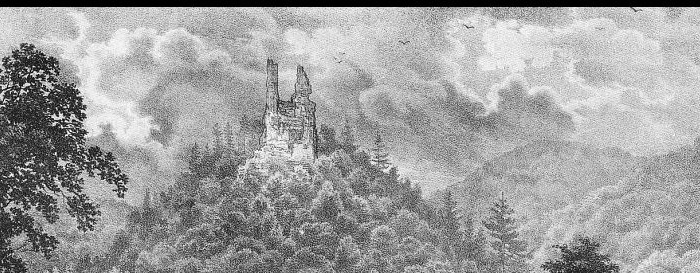History of the castle
Kaltenštejn Castle stands on a not very high hill in the Jeseníky Mountains, 437 m above sea level, near the village of Černá Voda (Jeseník district). The village itself preceded the construction of the castle by about ten years, which then appears in written sources in 1295 and 1296 under the name "castrum Kaltensteyn". It is thus mentioned by the Duke of Swidnica, Bolko I, with a note about a dispute between the said Duke and the Bishop of Wrocław, Jan Romek. The castle subsequently became the bishop's property, was pledged over time and changed its inhabitants quite often. A dramatic situation took place at the castle in 1441. Sigismund Rachna kidnapped the daughter of the royal governor Puta of Častolovice and sneakily seized Kaltenštejn Castle. The castle was besieged and conquered by the army of the Bishop of Wrocław. The above mentioned Sigismund Rachna was then cruelly tortured and executed there. One of the holders of the castle was Prince Přemek II. Opava, between 1470 and 1471. At the beginning of the 16th century, the castle was bought back by the bishopric's representative Jan Turz from the holder Henry of Tetovo and after 1505 it was demolished as obsolete, dilapidated and useless. The building material was then used in the construction of Javorník Castle (today's Jánský Vrch, because only Jan Thurza's successor Jan Roth changed the name of the castle after 1506).
The still standing torso of the cylindrical tower and the remains of the walls give an idea of the castle's layout. In the 13th century, in its earliest phase, the castle consisted of a bergfried (tower), a two-part palace and a wall with a gate, probably supplemented by a forecourt in the north-west, which was later supplemented by a zwinger. The entrance to the tower was located on the first floor, which was accessed by external wooden stairs - a part of the stone entrance portal is still visible on the north-east side, 6 m above ground level. A part of the accessible arched cellar has been preserved from the palace located by the outer wall. The handover protocol between Bishop Konrad and Gabriel Speyel of 1 September 1443 shows the form and equipment of the residence, the number of inhabitants and the proposed repairs. Thus, we know that in the second half of the 15th century, the castle housed about 18 people, others were available in Černá Voda for emergencies (archers), the castle grounds included four gates, a mill, a well, stables for horses, a brewery and a water wheel. The essential inventory was also described, namely two howitzers, two hand cannons, 30 dozens of arrows, half a barrel of powder, a mortar, a cooking pan, a kettle, an iron skillet and two pieces of salt.

